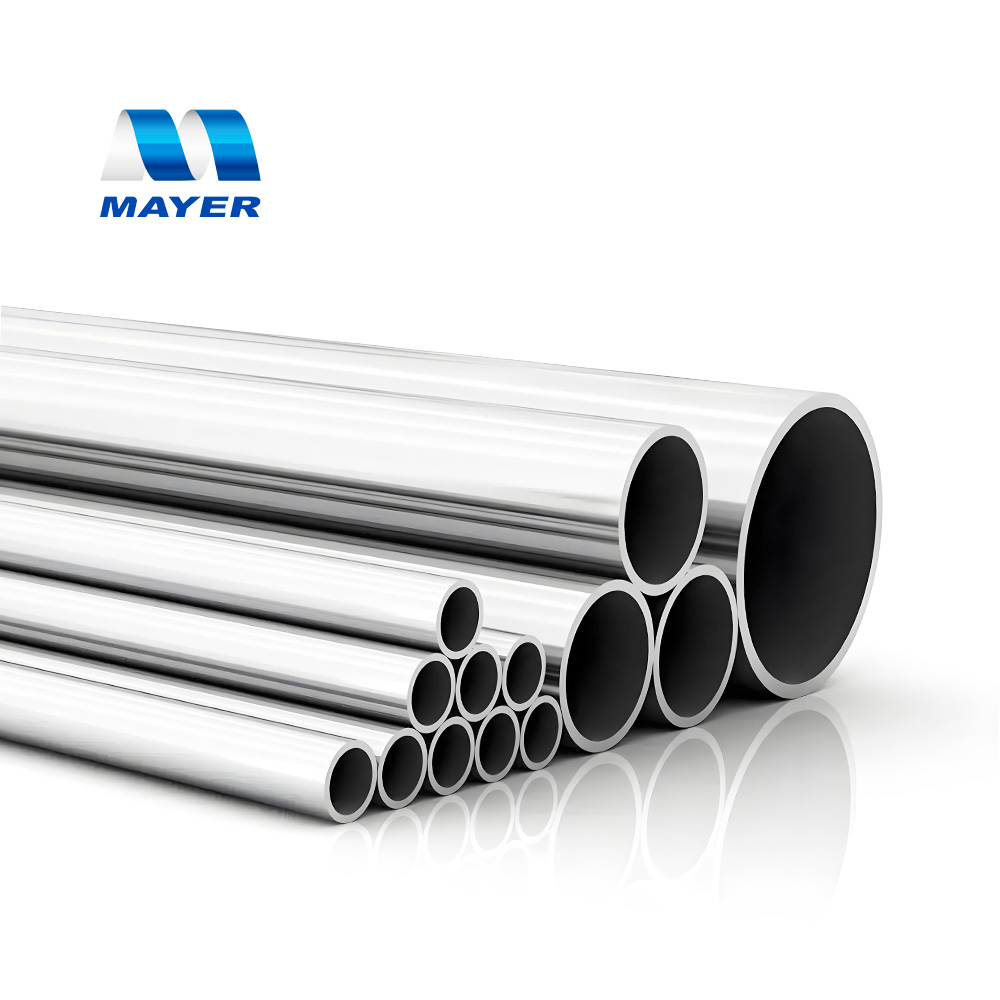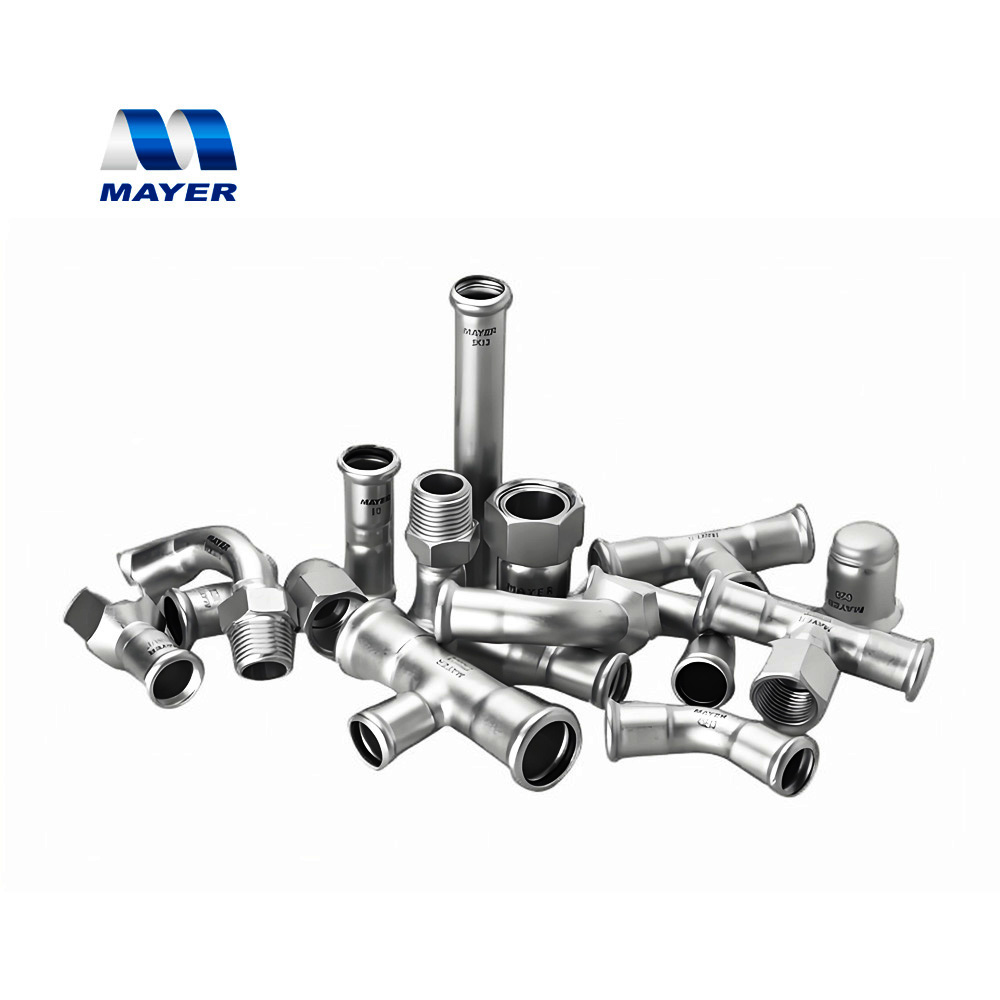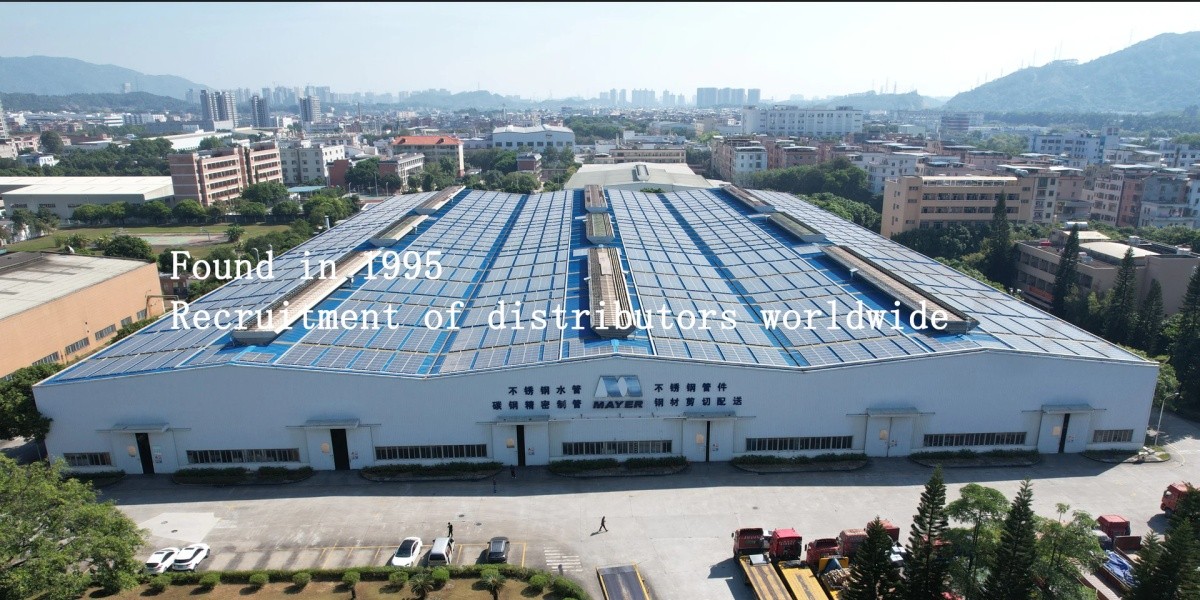
E-mail : info@mayer.cn
E-mail : info@mayer.cn
2025-05-28
Introduction
Stainless steel is an important metallic material renowned for its excellent corrosion resistance, superior mechanical properties, and aesthetically pleasing surface characteristics. It finds extensive applications across various sectors including construction, food processing, medical equipment, and chemical processing plants. Among the numerous stainless steel grades available, 304 and 316L have emerged as particularly prevalent choices, becoming the preferred materials for both industrial production and daily-use products.
For these very reasons, Mayer has adopted 304 and 316L as the primary raw materials for manufacturing stainless steel water pipes and fittings.


304 stainless steel (06Cr19Ni10) is one of the most commonly used types of austenitic stainless steel. Composed of approximately 18% chromium and 8% nickel, this alloy ratio provides it with outstanding overall properties.
1. Excellent Corrosion Resistance
Chromium reacts with oxygen to form a dense chromium oxide passive layer, which effectively prevents further oxidation and corrosion. In everyday atmospheric conditions and mildly corrosive environments, 304 stainless steel performs exceptionally well, meeting the requirements of most applications.
2. Superior Workability
304 stainless steel exhibits excellent machinability, allowing for easy welding, bending, and forming. This makes it ideal for manufacturing complex-shaped components while significantly reducing production costs and improving efficiency.
3. High-Temperature Stability
With stable performance at temperatures up to 800°C, 304 stainless steel is well-suited for high-temperature applications such as food processing equipment and kitchenware. Additionally, its non-magnetic or weakly magnetic properties make it highly suitable for electronic devices and medical instruments.
316L stainless steel (022Cr17Ni12Mo2) represents an enhanced version of 304, featuring the addition of 2-3% molybdenum and reduced carbon content (where "L" denotes low carbon). These compositional modifications deliver substantial performance improvements.
1. Superior Pitting and Crevice Corrosion Resistance
The molybdenum addition significantly enhances 316L's resistance to localized corrosion, particularly in chloride-containing environments. This makes 316L the material of choice for marine applications, chemical processing equipment, and medical sterilization devices. Laboratory tests demonstrate that in 3.5% NaCl solution, 316L exhibits over 30% greater pitting resistance compared to 304.
2. Enhanced Weldability with Reduced Carbon Content
With its controlled carbon content (≤0.03%), 316L offers improved weldability and minimizes susceptibility to intergranular corrosion in heat-affected zones. This characteristic proves particularly valuable for welded large-scale equipment and piping systems.
3. Excellent Resistance to Reducing Acids
316L demonstrates superior performance against reducing acids including sulfuric, hydrochloric, and phosphoric acids. This corrosion resistance profile establishes 316L as the preferred material for handling aggressive media in chemical and pharmaceutical industries.
While 316L offers superior performance, 304 stainless steel remains the most widely used grade primarily due to economic considerations. The raw material cost of 304 is approximately 20-30% lower than that of 316L. For applications not requiring exceptionally high corrosion resistance, selecting 304 can significantly reduce project costs.
Additionally, 304's easier workability translates to lower fabrication expenses. For mass-produced consumer goods such as kitchenware and architectural decoration materials, 304 delivers the optimal cost-to-performance ratio.
In practical applications, engineers employ a graded material selection strategy based on environmental corrosiveness:
304 for mild corrosion environments
316L for moderate to severe corrosion conditions
This tiered approach achieves the ideal balance between material performance and economic efficiency.

304 and 316L stainless steels have become the mainstream choices by achieving the optimal balance between corrosion resistance, workability, mechanical strength, and cost-effectiveness. While 304 meets most routine requirements with its well-rounded performance and lower cost, 316L delivers enhanced performance in demanding environments through its molybdenum addition.
Despite ongoing advancements in materials science and the emergence of new stainless steel grades, 304 and 316L will maintain their dominant market positions for the foreseeable future. Their mature manufacturing processes, reliable performance, and competitive pricing continue to make them the preferred options across industries.
The art and science of material selection lies in choosing the appropriate stainless steel grade for each specific application. This strategic approach ensures both product quality and cost optimization, demonstrating how technical knowledge and practical economics converge in engineering decisions.